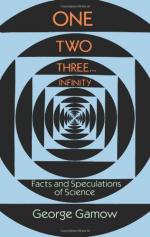|
This section contains 1,188 words (approx. 3 pages at 400 words per page) |

|
Chapter VII: Modern Alchemy Summary and Analysis
Elementary Particles
Is the atomic nuclei the ultimate in simple structures or can it be divided further? English chemist, William Prout, hypothesized that the "atoms of all different chemical elements have a common nature representing only various degrees of concentration of hydrogen atoms" (p. 149). Since oxygen is 16 times heavier than hydrogen, it must contain 16 hydrogen atoms. Iodine has an atomic weight of 127 and therefore must be formed from 127 hydrogen atoms. Many scientists at the time disregarded his theory. Prout did not live long enough to learn that he was right. British physicist F. W. Aston proved that chlorine was comprised of two kinds of chlorine atoms with identical chemical properties but with different atomic weights.
Elements with identical chemical components but different weights are referred to as isotopes. Translating Prout's theory into today's scientific language...
(read more from the Chapter VII: Modern Alchemy Summary)
|
This section contains 1,188 words (approx. 3 pages at 400 words per page) |

|




